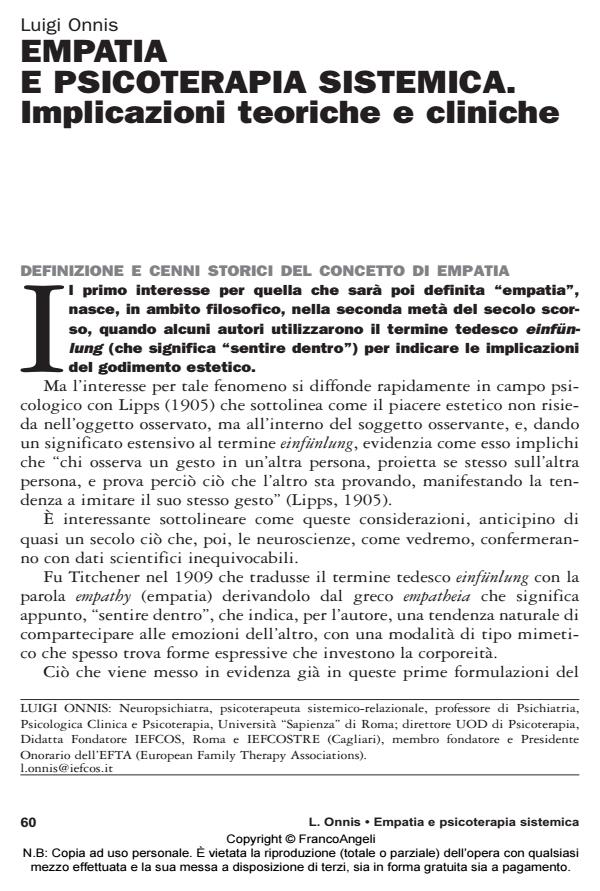Empathy and systemic psychotherapy. Theoretical and clinical implications
Journal title PSICOBIETTIVO
Author/s Luigi Onnis
Publishing Year 2015 Issue 2015/2
Language Italian Pages 24 P. 60-83 File size 141 KB
DOI 10.3280/PSOB2015-002004
DOI is like a bar code for intellectual property: to have more infomation
click here
Below, you can see the article first page
If you want to buy this article in PDF format, you can do it, following the instructions to buy download credits

FrancoAngeli is member of Publishers International Linking Association, Inc (PILA), a not-for-profit association which run the CrossRef service enabling links to and from online scholarly content.
The Author, after proposing a definition and a brief historical reconstruction of the concept of empathy, takes into account the scientific contribution that draw a great interest about empathy nowadays: those coming from developmental psychology, particularly through the importance of intersubjectivity, and those coming from neurosciences, through the mirror neurons function. It emerges that empathy is a relational construct that involves a shared with an emotional and affective basis (before cognitive) mediated by implicit language, specifically bodily. These relational characteristics of empathy fit perfectly with the systemic-relational psychotherapy which puts the importance of the inter-relationship between its principles and that values its analog languages in their therapeutic work to promote the emotional circulation between therapist and family. A clinical case is described in which the empathic activation among the family members and the therapist is promoted by the use of the analogical method of Family Time Sculptures. In the final part of the paper the risks of an overvaluation of empathy are also discussed, particularly when it is considered as a factor that, by itself, can produce change.
Keywords: Empathy; Intersubjectivity; Mirror Neurons; Systemic Therapy; Implicit Languages; Family Time Sculptures
Luigi Onnis, Empatia e psicoterapia sistemica. Implicazioni teoriche e cliniche in "PSICOBIETTIVO" 2/2015, pp 60-83, DOI: 10.3280/PSOB2015-002004